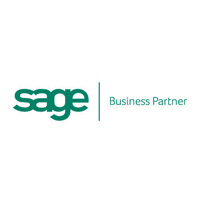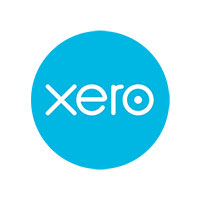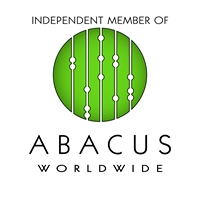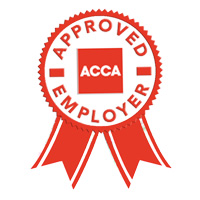
In this second blog looking at year end tax planning we consider a few ideas for those in business.
These are general planning ideas. Please do contact us, if you would like specific advice or more information.
Business tax
Payroll changes
As if RTI isn’t enough to cope with, you need to be aware of changes to payroll taxes and employee benefits arriving in 2015/16.
From 6 April 2015 there will be no employer’s NIC on the earnings of employees aged under 21, up to the upper earnings limit (£815 per week).You will need to keep a sharp eye on the birthdays of your younger employees as the zero rate of employer’s NIC will only apply if the employee is under 21 at the time he or she is paid.
The pay threshold from which student loan repayments must be collected through the payroll will increase to £17,335 from £16,910 on 6 April 2015. Plan your starting rate for ex-students accordingly.
Parents of children born or adopted on or after 5 April 2015 will be able to share their maternity or paternity pay and leave between them. You may need to adapt your payroll system to cope with this, as the first periods of leave could be shared as early as February 2015.
A new “taxfree” childcare scheme will start in autumn 2015. It will take the form of a savings scheme which parents pay into and to which the Government contributes a further 20%. Only parents paying tax at less than 45% will qualify for the scheme. Your employees will need to choose between taking employer provided childcare vouchers and this new childcare scheme. We can help explain the differences.
Auto pensions
Over the next three years all employers, including individuals who employ domestic staff, will be required to enrol their eligible employees into a qualifying pension scheme. This is called pension auto-enrolment.
It will affect your business sooner or later, so you should start planning for the associated costs now. Doing nothing is not an option as there are penalties for that – including jail terms.
You will be given a ‘staging date’ which is your compulsory starting date for auto-enrolment. For many small businesses this will be in 2016 or 2017, but you can start the process earlier, which will help spread the costs so you don’t get a big hit in 2017/18.
Every employee who meets all of these criteria must be auto-enrolled:
- aged 22 or more, but under State pension age
- earning more than the basic personal allowance (£10,000 for 2014/15)
- working in the UK; and
- not already in a suitable workplace pension
This excludes very low paid workers, but those who pay at least some national insurance on their earnings will be able to opt in to the pension scheme, as will workers aged up to 75.
All employees will be able to opt out, but the employer must not encourage this, or do anything to discourage membership of the pension scheme – on pain of penalties of up to £10,000 per day for the largest employers.
The auto-enrolment process requires a good deal of record keeping – to prove you have given each employee the correct information at the right time. Again penalties apply if your compliance is not up to scratch.
Employers will be required to make contributions to the pension scheme of at least 1% of a defined range of earnings, rising to 3% by October 2018. However, this amount must be supplemented by contributions from the employee or employer, so the minimum total contribution is 8% by the same date.
The band of earnings on which this percentage contribution is based can vary according to definitions within the employee’s employment contracts, and the options chosen by the employer. We can help you work out the financial cost for each option, and whether a salary sacrifice in favour of pension contributions would help bring down the total.
Planning to sell
There comes a time for every business owner when retirement becomes more attractive than carrying on. If you are reaching that point, you need to start planning for selling or passing on your business.
A sale of a successful trading company will generate a capital gain, which would normally be taxed at 28% after deduction of the annual exemption of £11,000. Entrepreneurs’ relief can reduce this tax rate to 10%, but all of the following conditions must be met for at least 12 months ending with the date of the sale:
- you held at least 5% of the shares and voting rights of the company; and
- you were an employee, director or company secretary of that company or of another company in the same group.
If you step back gradually from the company, retiring from your role as director before you sell your shares, you may miss out on valuable tax relief.
If you would like to pass on your company to your employees, you can use a trust to hold the shares for the benefit of those employees. By transferring shares to the trust, that collectively provide control over the company, you will escape any capital gains tax on your disposal. However, the transfer of shares to the trust must be completed within one tax year, so it would be best to start this process at the beginning of the next tax year.
Restricted interest
When you borrow as an individual to invest in a business or let property, the interest you pay on the loan will be tax deductible, within limits. Interest paid on a loan used to acquire property to let can only be deducted from rental income arising from your property letting business.
For interest due on other business loans, there is cap on the total amount of interest plus losses that can be deducted from your other income. This is the greater of £50,000 and 25% of your income for that tax year.
If you don’t get tax relief for the interest charged on a business-related loan in the year you pay it, you can’t carry forward that charge to get relief in another tax year. So it’s important to claim tax relief for interest paid, before other deductions for losses, which can be used in other tax years.
If your business-related loans are so high that you run into tax relief restrictions for the interest you pay, you may need to consider selling some assets to restructure your borrowings.
Timing is everything
The end of the accounting period for your business is a key point for tax planning. You can save or delay tax by moving income and expenditure between accounting periods.
For instance, advancing the acquisition of assets to just within your current accounting period will mean the capital allowances associated with those assets can be claimed earlier.
Disposing of high-value assets such as property may give rise to a capital gain. Delaying the disposal into your company’s next accounting period will postpone the tax payable on that gain, by up to a year.
If you have acquired a commercial property within the last two years, you should check whether the value of any fixtures within that building have been formally agreed with the building’s previous owner. Without this formal agreement you could lose the right to claim capital allowances on those fixtures.
If your current year profits are looking very healthy, you may want to advance the payment of repairs, training costs, bonuses or pensions contributions.
An accrued salary payment, such as a bonus voted before the year-end, is deductible for the period if it is actually paid within nine months after that year-end. However, a pension contribution must be paid within a company’s accounting period to be deductible for that period.
Good company?
Operating your business through a company can cost less in tax. From 1 April 2015 all companies will pay tax at 20%.
This is a much lower rate than income tax at 40% and 45% that applies to individuals. In addition sole traders and partners pay national insurance contributions (NIC) at 9% or 2% on all the profits the business makes above a low starting threshold, whether those profits are left within the business or not.
Company owners may pay additional tax and possibly NIC when the company’s profits are paid out to them. Just how much tax and NIC are due depends on how the profits are extracted. For example, dividends are not subject to NIC, but salary and bonuses are.
Individuals can reduce the NIC they pay, by operating through a company and taking out profits as dividends on top of a small salary. Incorporating a business is a complex decision, which should not be taken on tax grounds alone. There are more forms to file every year when running a company than an unincorporated business, but the tax savings may outweigh that.
The alternative ways of taking money out of a company can’t all be used in the same circumstances, dividends can only be paid where there are accumulated profits in the company. A salary can be paid even if the company is making a loss, but a salary over the NI threshold of £7,956 (2014/15) will carry NICs for the individual and the company, although the ‘employment allowance’ of up to £2,000 will reduce the company’s liability to NIC (but not that of the individual).
To maximise the amount you can take out from your company and minimise the tax charges, take some expert advice before the tax year-end.
Should VAT be flat?
A simplified ‘flat rate VAT scheme’ (FRS) is available for businesses with VATable turnover of up to £150,000. You charge VAT as normal to your customers, but you don’t pay all the output tax over to HMRC – you keep some of it instead of claiming input tax on most expenses. That saves the bother of separating out the VAT on your costs – and gets rid of a whole lot of reasons to fall foul of the VATman.
The amount of VAT you have to pay over to HMRC ranges from 4% to 14.5% of your gross turnover, depending on the business sector you operate in. This is the “flat rate”. You choose which trade sector classification best fits your business when you apply for the scheme, then operate the flat rate attached to that sector.
If you have two different activities which fall into different trade sectors (such as catering and retailing), you must use the flat rate that applies to the activities which form the larger part of your turnover. That can make the flat rate very generous or very stingy for the smaller part of your business, and change the decision overall. For example, if you have a buy-to-let property, that counts as a business for VAT purposes. Even though you don’t charge VAT to residential tenants, if you are registered for the FRS you may have to pay VAT to HMRC on your rental income.
If you are in any doubt whether the FRS is for you – whether you are currently using it or not – we’ll be happy to check.








